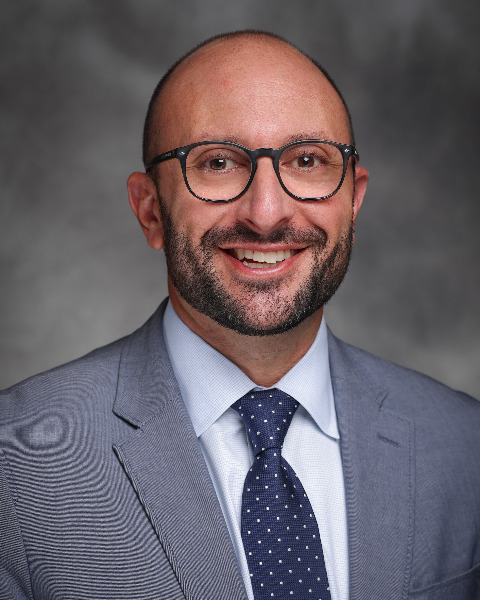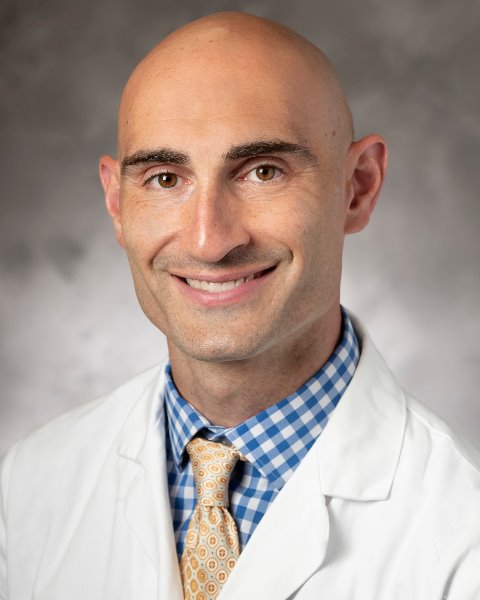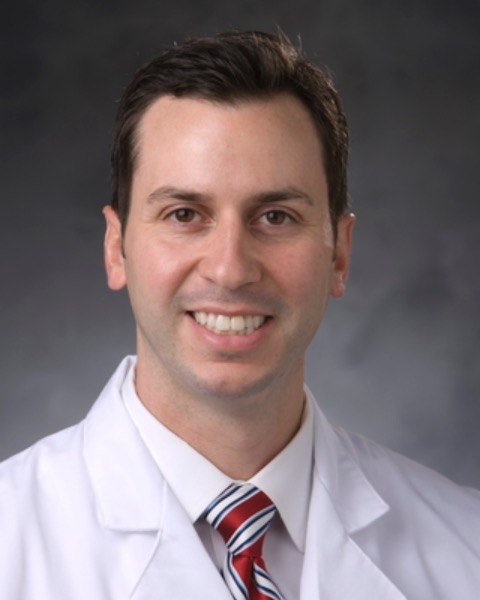Hepato-pancreato-biliary
E228: Perioperative and oncologic outcomes of hepatic arterial infusion pump chemotherapy for patients with unresectable colorectal liver metastases at an expanding HAI program

Michael E. Lidsky, MD
Associate Professor of Surgery
Duke University Medical Center
Durham, North Carolina, United States
Annie Liu, MD PhD
General Surgery Resident
Duke University Medical Center
Durham, North Carolina, United States
Annie Liu, MD PhD
General Surgery Resident
Duke University Medical Center
Durham, North Carolina, United States- ML
Melissa Lowe, MS
Statistician
Duke Cancer Institute, United States - DN
Donna Niedzwiecki, PhD
Statistician
Duke Cancer Institute, United States - RK
Ryan Kramer, B.A.
Medical Student
Duke Univeristy School of Medicine, United States - CM
Cathlyn Medina, n/a
Medical Student
Duke University School of Medicine, United States 
Kristen E. Rhodin, MD, MHS
General Surgery Resident
Duke University Medical Center
Durham, North Carolina, United States
Jeremy M. Sharib, MD (he/him/his)
Assistant Professor
Fred Hutchinson Cancer Center, University of Washington Medical Center
Seattle, Washington, United States- JC
John Creasy, MD
Surgical Oncologist
The Oregon Clinic, United States - BW
Benjamin Wildman-Tobriner, MD
Associate Professor
Duke University School of Medicine, United States - JA
James Abbruzzese, MD
Professor
Duke University School of Medicine, United States - DG
Deanna Griffie, MSN, AGNP-BC
Nurse Practitioner
Duke Cancer Institute, United States - JS
John H. Strickler, MD
Associate Professor
Duke University School of Medicine, United States - DH
David Hsu, MD PhD
Associate Professor
Duke University School of Medicine, United States - DN
Daniel P. Nussbaum, MD
Assistant Professor of Surgery
Duke University Medical Center, United States 
Sabino Zani, Jr., MD
Associate Professor of Surgery
Duke University Medical Center
Durham, North Carolina, United States- HU
Hope E. Uronis, MD
Associate Professor
Duke University School of Medicine, United States 
Peter J. Allen, MD
Professor of Surgery
Duke University Medical Center
Durham, NC, United States
ePoster Abstract Author(s)
Submitter(s)
Author(s)
Hepatic arterial infusion (HAI) is an established treatment for patients with unresectable colorectal liver metastases (uCRLM). Until recently, HAI was only performed at a few centers with adequate expertise and infrastructure. We previously reported early outcomes suggesting that implementation of a new HAI program is effective. Here, we report perioperative and longer-term oncologic outcomes from an expanded series of patients with uCRLM treated with HAI.
Methods:
We analyzed outcomes from consecutive patients with uCRLM who underwent HAI pump (HAIP) placement at Duke University Hospital from 2018-2023. Demographics, prior treatment, perioperative and oncologic outcomes were assessed. Overall survival (OS), hepatic- (hPFS) and extra-hepatic (ehPFS) progression free survival were calculated using Kaplan-Meier methods among patients with at least 12 months follow-up.
Results:
94 patients underwent HAIP placement for uCRLM. 58 (62%) were male, with a median age of 52(22,80). 78(83%) patients presented with synchronous liver metastases, 76(81%) with bilobar metastases, and median of 7 liver tumors. Most patients (92, 98%) received prior chemotherapy with median treatment cycle number of 12 (2,66). 43(45%) pumps were implanted robotically.
Post-operative HAI-specific complications occurred in 21 patients (22%), including 6(6%) patients with biliary sclerosis, and a 90-day mortality rate of 3%. Of 74 patients with at least 12 months of follow up, 70(95%) initiated HAI therapy and received a median 5 cycles of FUDR. 13(18%) achieved conversion to resection, and 2 underwent liver transplantation. 51(68%) experienced hepatic progression or death with a median hPFS of 16(12.2,19.8) months, while 53(72%) experienced extra-hepatic progression or death with a median ehPFS of 11.5(7.59, 19.8) months. Median OS was 35.9(30.6, N.E.) months. These outcomes were similar when stratified by extent of prior chemotherapy. Patients who converted to resection had improved OS when compared to those who did not (median OS NR vs. 30 months, p=0.02).
Conclusions:
We demonstrate that a new HAI center can recapitulate previously reported perioperative and survival outcomes of HAI treatment for uCRLM at established centers. Conversion to resection is achievable and yields improved survival. Granular analysis of our institutional data, which includes mutation status and primary tumor sidedness could inform selection and treatment strategies for new HAI programs.
Learning Objectives:
- Describe overall survival outcomes from hepatic artery infusion pump therapy for patients with unresectable colorectal liver metastases.
- Describe progression free survival outcomes from hepatic artery infusion pump therapy for patients with unresectable colorectal liver metastases.
- Describe perioperative outcomes from hepatic artery infusion pump therapy for patients with unresectable colorectal liver metastases.
